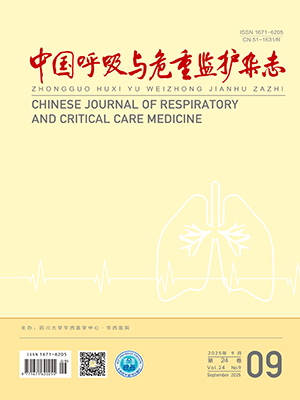| 1. |
Katoh S, Kitazawa H, Shimosato T, et al. Cloning and characterization of Swine interleukin-17, preferentially expressed in the intestines. J Interferon Cytokine Res, 2004, 24: 553-559.
|
| 2. |
Li TS, Li XN, Chang ZJ, et al. Identification and functional characterization of a novel interleukin 17 receptor: a possible mitogenic activation through ras /mitogen-activated protein kinase signaling pathway. Cell Signal, 2006, 18: 1287-1298.
|
| 3. |
Rahman MS, Yamasaki A, Yang J, et al. IL-17A induces eotaxin-1 /CC chemokine ligand 11 expression in human airway smooth muscle cells: role ofMAPK ( Erk1/2, JNK, and p38) pathways. J Immunol,2006, 177: 4064-4071.
|
| 4. |
Patel DN, King CA, Bailey SR, et al. Interleukin-17 stimulates Creactive protein expression in hepatocytes and smooth muscle cells via p38MAPK and ERK1 /2-dependent NF-kappaB and C/EBPbeta activation. J Biol Chem, 2007, 282: 27229-27238.
|
| 5. |
Ferretti S, Bonneau O, Dubois GR, et al. IL-17, produced by lymphocytes and neutrophils, is necessary for lipopolysaccharideinduced airway neutrophilia: IL-15 as a possible trigger. J Immunol,2003, 170: 2106-2112.
|
| 6. |
Miljkovic DJ, Cvetkovic I, Vuckovic O, et al. The role of interleukin-17 in inducible nitric oxide synthase-mediated nitric oxide production in endothelial cells. Cell Mol Life Sci, 2003, 60 : 518 -525.
|
| 7. |
Henness S, van Thoor E, Ge Q, et al. IL-17A acts via p38 MAPK to increase stability of TNF-alpha-induced IL-8 mRNA in human ASM. Am J Physiol Lung Cell Mol Physiol, 2006, 290: L1283-L1290 .
|
| 8. |
Kao CY, Huang F, Chen Y, et al. Up-regulation of CC chemokine ligand 20 expression in human airway epithelium by IL-17 through a JAK-independent but MEK/ NF-kappaB-dependent signaling pathway. J Immunol, 2005, 175: 6676-6685.
|
| 9. |
Happel KI, Zheng M, Young E, et al. Cutting edge: roles of Toll-like receptor 4 and IL-23 in IL-17 expression in response to Klebsiella pneumoniae infection. J Immunol, 2003, 170: 4432-4436.
|
| 10. |
Harrington LE, Hatton RD, Mangan PR, et al. Interleukin 17 -producing CD4 + effector T cells develop via a liesge distinct from the T helper type 1 and lineages. Nat Immunol, 2005, 6: 123-132.
|
| 11. |
Park H, Li Z, Yang XO, et al. A distinct lineage of CD4 T cells regulates tissue inflammation by producing interleukin 17. Nat Immunol, 2005, 6: 1133-1141.
|
| 12. |
Wilson NJ, Boniface K, Chan JR, et al. Development, cytokine profile and function of human interleukin 17-producing helper T cells. Nat Immunol, 2007, 8: 950-957.
|
| 13. |
Kolls JK, Lind n A. Interleukin-17 family members and inflammation. Immunity, 2004, 21: 467-476.
|
| 14. |
Aranami T, Yamamura T. Th17 cells and autoimmune encephalomyelitis( EAE/MS) . Allergol Int, 2008, 57: 115-120.
|
| 15. |
Park H, Li Z, Yang XO, et al. A distinct lineage of CD4 T cells regulates inflarmmation by producing interleukin 17. Nat Immunol,2005, 6: 1133-1141.
|
| 16. |
Harrington LE, Hatton RD, Mangan PR, et al. Interleukin 17 -producing CD4 + effector T cells develop via a lineage distinct from the T helper type 1 and 2 lineages. Nat Immunol, 2005 , 6: 1123 -1132.
|
| 17. |
Xiong W, Zeng D, Xu Y, et al. Expression of interleukin-17 in lung and peripheral blood of asthmatic rats and the influence of dexamethasone. J Huazhong Univ Sci Technolog Med Sci, 2007, 27:498-500.
|
| 18. |
Bullens DM, Truyen E, Coteur L, et al. IL-17 mRNA in sputum of asthmatic patients: linking T cell driven inflammation and granulocytic influx? Respir Res, 2006, 7: 135-139.
|
| 19. |
王宏伟, 曲书强, 高君, 等. 哮喘患儿血清白细胞介素17、基质金属蛋白酶-9 和免疫球蛋白E 水平测定的意义. 实用儿科临床杂志, 2007, 4: 260-261.
|
| 20. |
周庆涛, 孙永昌, 姚婉贞. 重度支气管哮喘患者气道炎症及其与白细胞介素17 的关系. 中华结核和呼吸杂志, 2005, 9: 630-635.
|
| 21. |
Nakae S, Komiyama Y, Nambu A, et al. Antigen-specific T cell sensitization is impaired in Il-17-deficient mice, causing suppression of allergic cellular and humoral responses. Immunity, 2002, 17: 375 -387.
|
| 22. |
Schnyder-Candrian S, Togbe D, Couilin I, et al. Interleukin-17 is a negative regulator of established allergic asthma. J Exp Med, 2006 ,203: 2715-2725.
|
| 23. |
Pichavant M, Goya S, Meyer EH, et al. Ozone exposure in a mouse model induces airway hyperreactivity that requires the presence of natural killer T cells and IL-17 . J Exp Med, 2008, 205: 385 -393.
|
| 24. |
Molet S, Hamid Q, Davoine F, et al. IL-17 is increased in asthmatic airways and induces human bronchial fibroblasts to produce cytokines. J Allergy Clin Immunol, 2001, 108: 430-438.
|
| 25. |
Prause O, Laan M, L tvall J, et al. Pharmacological modulation of interleukin-17-induced GCP-2, GRO-alpha and interleukin-8 release in human bronchial epithelial cells. Eur J Pharmacol, 2003 , 462 :193-198.
|
| 26. |
Jones CE, Chan K. Interleukin-17 stimulates the expression of interleukin-8, growth-related oncogene-alpha, and granulocytecolony-stimulating factor by human airway epithelial cells. Am J Respir Cell Mol Biol, 2002, 26: 748-753.
|
| 27. |
Lind n A, LaanM, Anderson GP. Neutrophils, interleukin-17A and lung disease. Eur Respir J, 2005, 25: 159-172.
|
| 28. |
Barnes PJ. Immunology of asthma and chronic obstructive pulmonary disease. Nat Rev Immunol, 2008, 8: 183-192.
|
| 29. |
Imamura M, Okunishi K, Ohtsu H, et al. Pravastatin attenuates allergic airway inflammation by suppressing antigen-sensitization, IL-17 production, and antigen-presentation in the lung. Thorax, 2009 ,64: 44-49.
|




